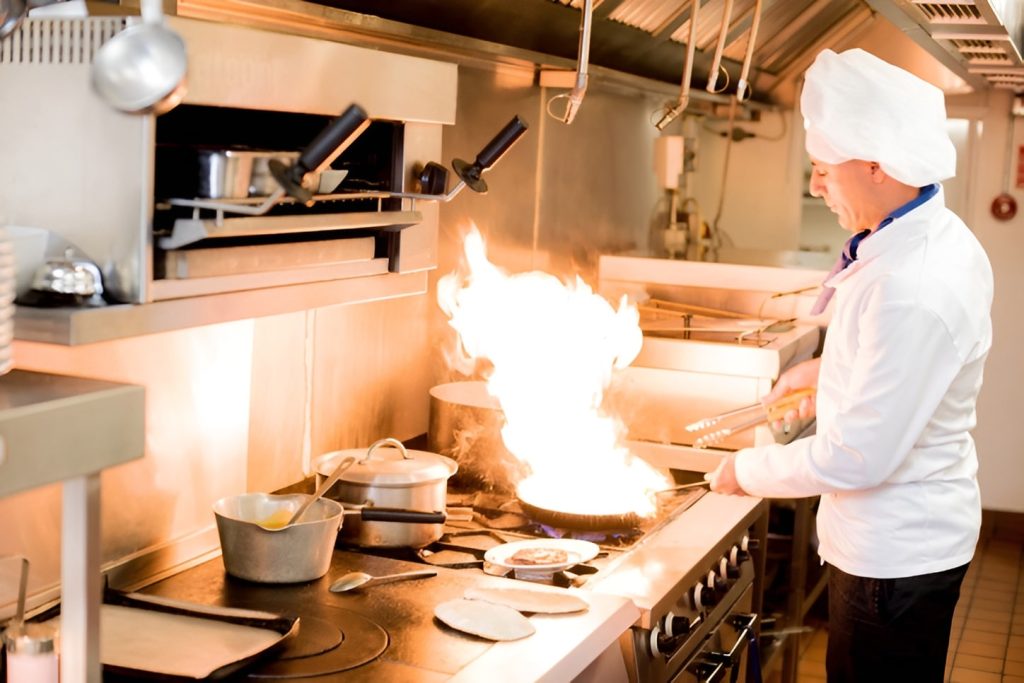Fire Suppression Systems
Choosing the right fire suppression system can be complex for certain applications, as it requires careful consideration of the production activities, associated hazards, and the applicable regulatory framework. Any system designed to suppress, control, or prevent the spread of fire is referred to as a fire suppression system.
Generally, fire suppression systems are classified according to the type of suppression agent used to control or extinguish fires. In some cases, systems may incorporate multiple types of extinguishing agents, depending on the specific hazards and operational requirements of the spaces to be protected.


WATER SYSTEMS:
Water-based Fire Suppression Systems are widely used due to their cost-effective installation and ability to protect large areas with relatively low maintenance requirements. Water is also a 100% environmentally friendly agent, abundant, non-toxic, and one of the most economical fire suppression options available.
Because water is harmless to humans, these systems can be activated without the need to evacuate or isolate the protected areas.
Water sprinkler and spray systems suppress fires primarily through cooling and oxygen displacement (suffocation). Water mist systems, in particular, use significantly less water while offering improved distribution and rapid cooling efficiency. The fine water droplets evaporate quickly, absorbing a substantial amount of the heat energy released during a fire, which enhances the overall suppression effectiveness.
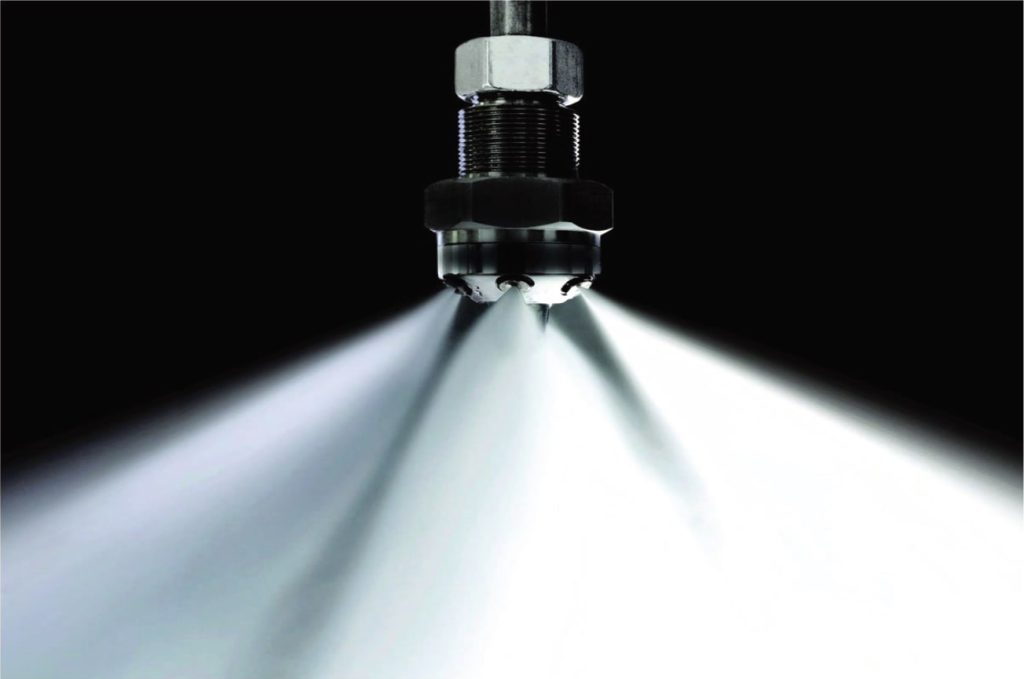
CO2 SYSTEMS:
Carbon dioxide (CO2) is a versatile and cost-effective fire suppression agent, used to protect hazards through either total flooding or local application, where the gas is discharged directly over the source of risk. CO2 systems are typically designed with high-pressure cylinders for gas storage; however, for applications requiring large volumes of CO2, low-pressure refrigerated tanks are often used.
CO2 is particularly suitable for unoccupied areas, and is commonly applied in engine rooms, ducts, ovens, flammable liquid or gas storage areas, immersion tanks, and generator enclosures.
The suppression mechanism is based on oxygen displacement (suffocation) and cooling. Key advantages of CO₂ systems include cost-effectiveness, efficiently storing as a liquefied gas, low cost, high density when stored in high pressure cylinders or low pressure tanks, dielectric capacity, non-corrosive, and it does not leave any residues after released.
While CO₂ is often considered inert in typical use cases and leaves no residue upon discharge, it is not classified as an Inert Gas or Clean Agent under fire protection standards due to certain toxicity concerns and application limitations, especially in occupied spaces.
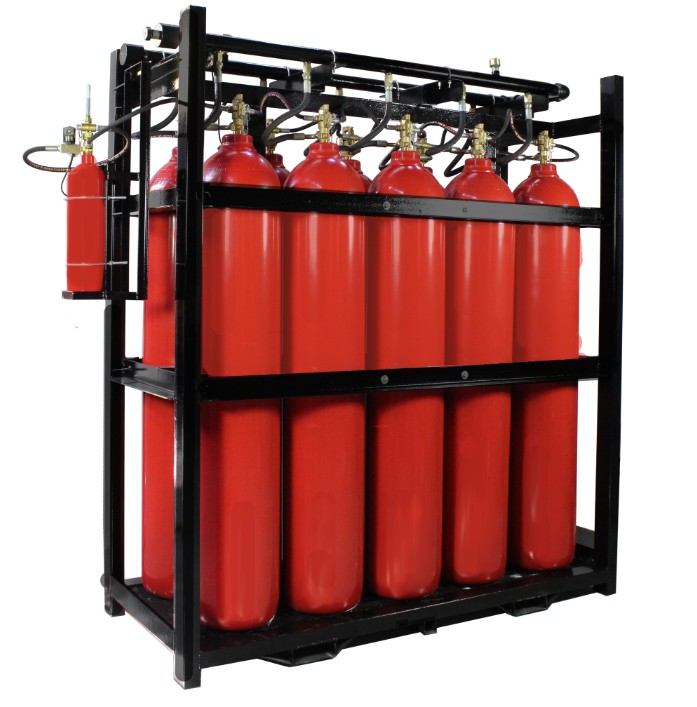
CLEAN AGENT SYSTEMS:
Clean agents are non-conductive (dielectric), gaseous fire extinguishing agents that evaporate completely upon discharge, leaving no residue. These agents were developed to replace Halon, which became heavily restricted under the Montreal Protocol on Substances that Deplete the Ozone Layer due to its harmful environmental impact.
While several clean agents were introduced as alternatives, the Kyoto Protocol and subsequent environmental regulations aimed at reducing greenhouse gas emissions have led to a reduction in the number of clean agents approved for use in the fire protection industry.
Clean agent systems are widely used to protect areas housing high-value, sensitive, historic, or mission-critical equipment, where a high level of protection is required and minimal post-discharge cleanup is essential.
Halocarbon Agents:
Halocarbon clean agents are composed primarily of organic compounds containing elements such as fluorine, chlorine, bromine, or iodine. Common types of halocarbons include Hydrofluorocarbons (HFCs), Hydrochlorofluorocarbons (HCFCs), Perfluorocarbons (PFCs), Fluoroiodocarbons (FICs), and the Fluoroketones (FKs).

It is advisable to assess the need to schedule the replacement of fire suppression systems that still use HFCs or PFCs, given the current restrictions in place in some countries under the Kyoto Protocol and related environmental regulations.
- FK-5-1-12
Commercialized by 3M under the trade name “Novec™ 1230” prior to 2025, FK-5-1-12 is a clean agent with a Global Warming Potential (GWP) of less than 1, making its environmental impact on climate change negligible. It also has zero ozone depletion potential (ODP) and is not listed among restricted fluorinated greenhouse gases under current environmental regulations.
The fire suppression mechanism of FK-5-1-12 is based on heat absorption and the interruption of the chemical chain reaction, specifically, the inhibition of free radicals that sustain the combustion process.
Thanks to its high density and efficient suppression performance, FK-5-1-12 systems require fewer storage cylinders to achieve the necessary agent concentration when compared to other gaseous fire suppression agents.
- Inert Gases
Inert gas Fire Suppression Systems typically use mixtures of gases such as nitrogen, argon, helium, neon, and small amounts of carbon dioxide (CO2) in various concentrations, depending on the system design. Unlike CO2 systems, inert gas mixtures are not lethal to humans when discharged at design concentrations. However, because these systems reduce the oxygen concentration in the protected space to a level below that required for combustion, safety protocols must be followed, including evacuation procedures and occupancy restrictions before the discharge.
The most relevant features of inert gases are their non-toxicity and zero carbon footprint. These gases are naturally occurring components of the atmosphere, making them an environmentally friendly and safe choice for fire suppression applications.
Inert gas systems suppress fires by cooling the flame and lowering the oxygen concentration below the threshold needed to sustain combustion.
AEROSOL GENERATORS
Aerosol Generators are devices designed to discharge and efficiently disperse a solid compound that, upon activation, is transformed into an ultra-fine aerosol fire suppression agent. This aerosol typically consists of Potassium Carbonate (K₂CO₃), H2O (water vapour), N2, and CO2.
These systems are compact, lightweight, and easy to install, making them suitable for protecting a wide range of fire hazards. Depending on the manufacturer, aerosol generators typically have a service life ranging from 5 to 15 years, after which the unit must be replaced.
Once activated, the generator releases micron-sized particles of potassium salts, which suppress fire by inhibiting the chemical chain reaction that sustains combustion.
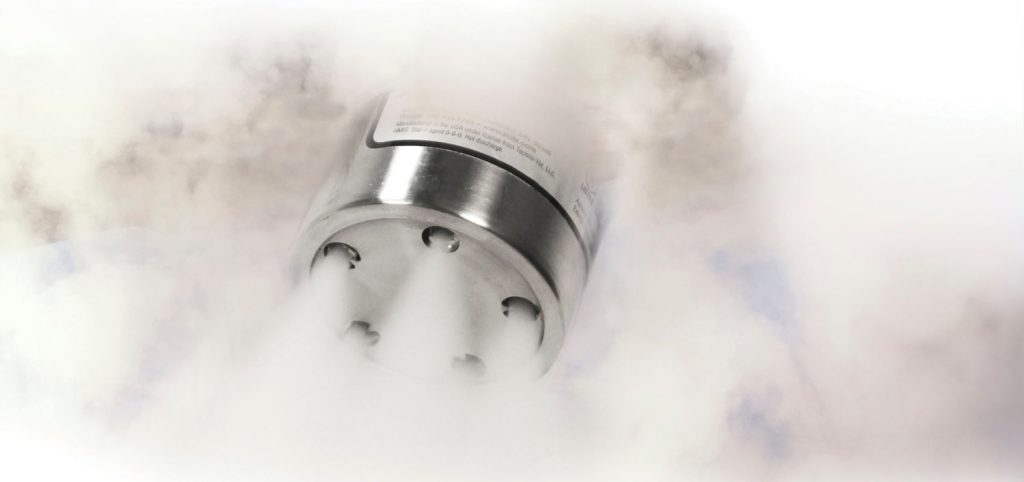
FOAM SYSTEMS
Foam Fire Suppression Systems provide a rapid and cost-effective solution for both large, confined spaces (using High Expansion foam) and open areas (using Low Expansion foam) where flammable liquids are present.
Due to their relatively low installation and maintenance costs, foam systems are often the preferred choice for refineries, oil and chemical storage tanks, aviation facilities, engine rooms, and other storage areas handling flammable liquids.
These systems work by generating a stable foam blanket that suppresses fire by smothering the flames, effectively cutting off the oxygen supply and preventing the release of flammable vapours.
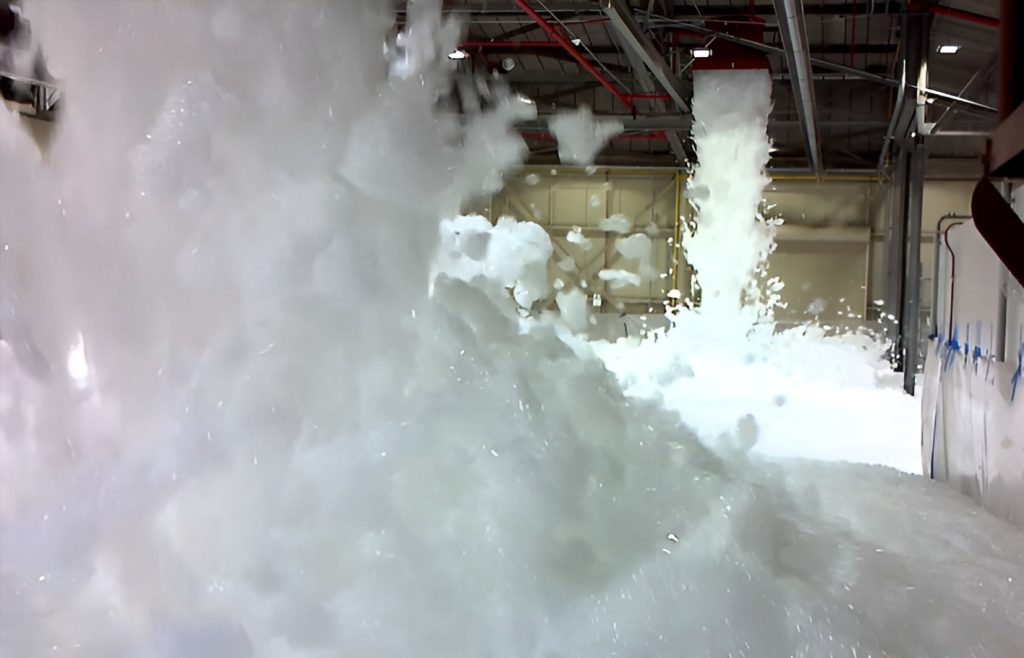
DRY POWDER SYSTEMS
Dry Powder Fire Suppression Systems are an effective solution for Class B, C, and D fires. They are commonly used to protect hazards involving flammable gases and pyrophoric materials, utilizing dry powders specifically certified for Class D fires as the extinguishing agent.
The dry powder rapidly suppresses fire by disrupting the chemical chain reaction, while simultaneously smothering the flames and starving the fire of oxygen, ensuring fast and efficient fire control.
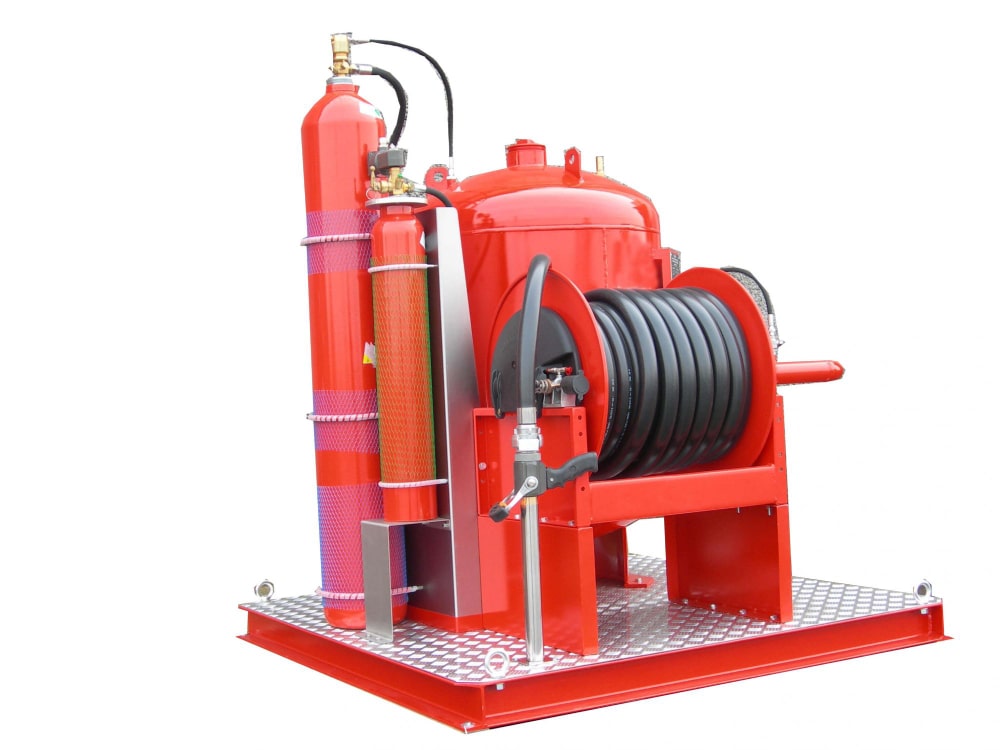
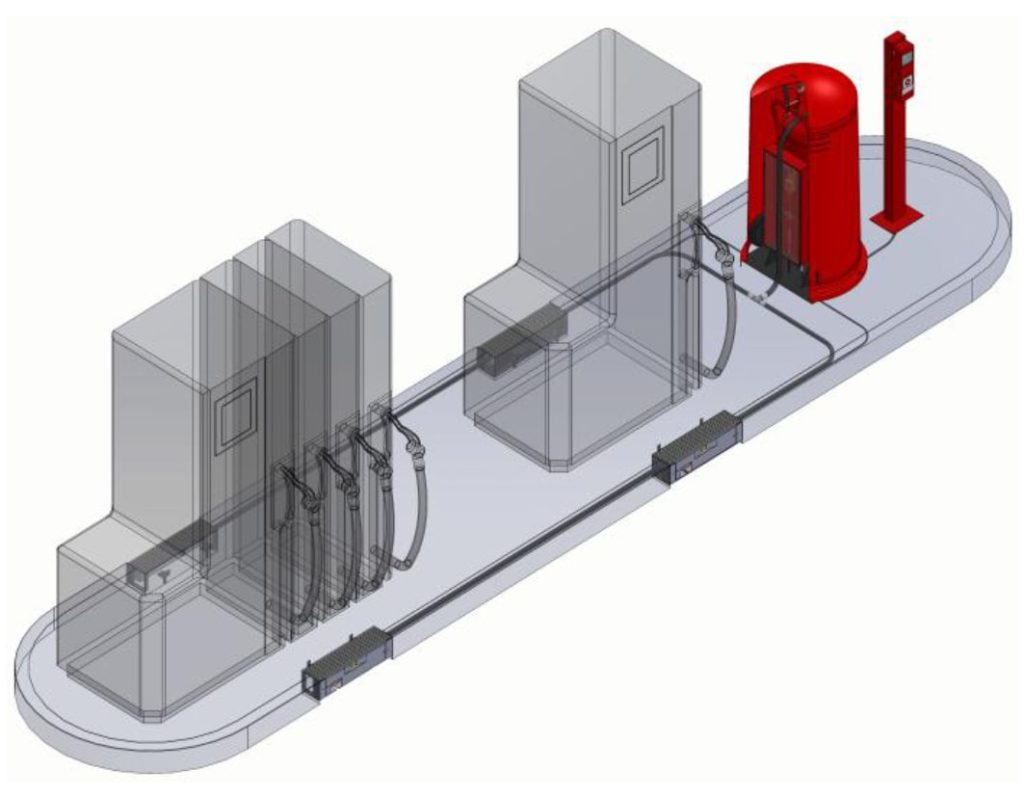
SYSTEMS FOR RESTAURANT COOKING EQUIPMENT
According to the NFPA, approximately 60% of restaurant fires are caused by a combination of high-temperature cooking oils and grease buildup in galley exhaust ducts.
Fire suppression systems designed for cooking equipment provide an efficient and cost-effective solution to mitigate these risks during routine kitchen operations.
These systems feature both automatic and manual activation to quickly suppress auto-ignited fires involving fats and cooking oils. They also protect the ventilation ducts and hoods and include mechanisms to shut down the gas supply and electrical power to the equipment.
The fire suppressant used is a specially formulated foam compound, composed of organic and inorganic salts, surfactants, and additives. This foam produces a stable blanket with a long drainage time, which enhances its effectiveness in suppressing fires involving vegetable or animal fats, greases, and cooking oils.
